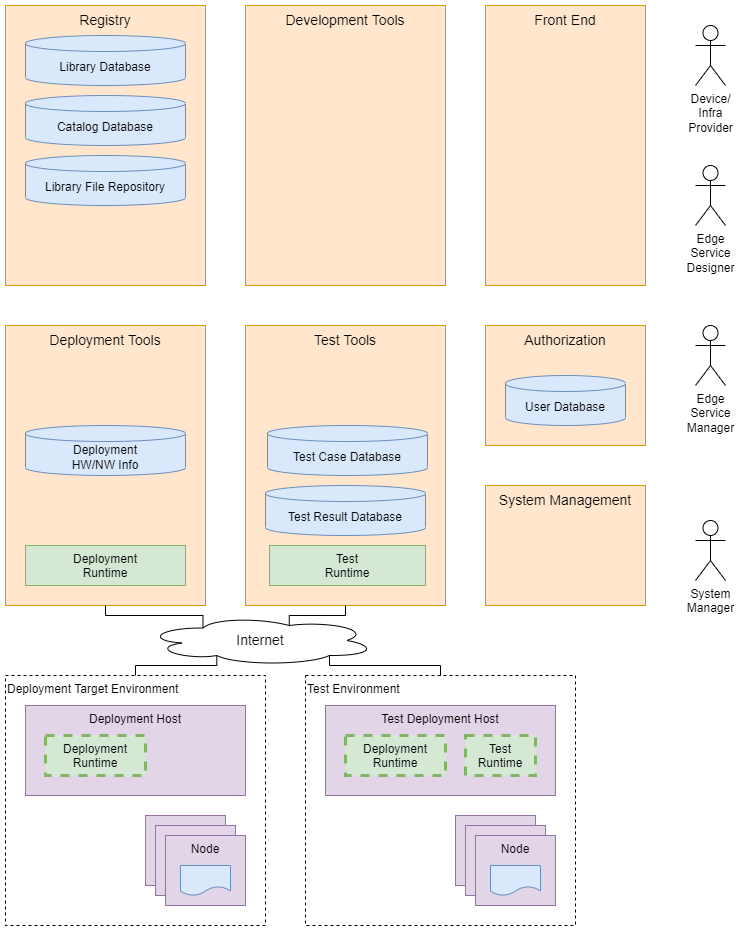...
The diagram below shows the overall architecture of this blueprint.
The three main types of actor are the device/infra provider, the edge service designer, and the edge service manager. The system manager is a fourth type of actor representing the manager of the Edge Service Enabling Platform itself.
Each actor engages in the following activities using the Edge Service Enabling Platform:
- Device/Infra Providers create and register libraries, which are stored in the registry component's library database and library file repository. A library contains the files necessary to deploy support for a device (e.g. a temperature sensor or a camera) or piece of infrastructure (e.g. a distributed storage system, messaging system, backend database, or computing platform) in an edge service, along with the data needed to connect the library with other libraries in a complete edge service design to form an edge service catalog. Aside from creating and registering libraries, device and infra providers will also use test environments and the platform's test tools to verify their libraries.
- Edge Service Designers create and register edge service catalogs. These are stored in the registry component's catalog database and refer to libraries in the library database. A catalog defines a configuration of nodes and libraries deployed on those nodes, connected to each other via various styles of API (e.g. REST messaging over IP networks, Unix file sockets, device driver ioctl, or direct calls, among many other possibilities), in order to provide a service. Edge service designers will also use test environments and the platform's test tools to verify their catalogs.
- Edge Service Managers use catalogs they choose from the platform and the platform's deployment tools to define and deploy instances of an edge service in their target environments. They choose a catalog for the service they wish to implement, and provide the target environment for deployment. They configure the specifics of their environment (network addresses, specific hardware configuration, security keys and so on) and use the platform's deployment tools, especially the deployment runtime components, to roll out the service.
- The System Manager maintains the platform itself, configuring the underlying system, installing and updating software, making backups, and maintaining the user database.
It is possible for one organization or even one individual to perform any number of these roles, or even all of them.
Platform Architecture
The table below summarizes the platform for each node in the blueprint.
...
